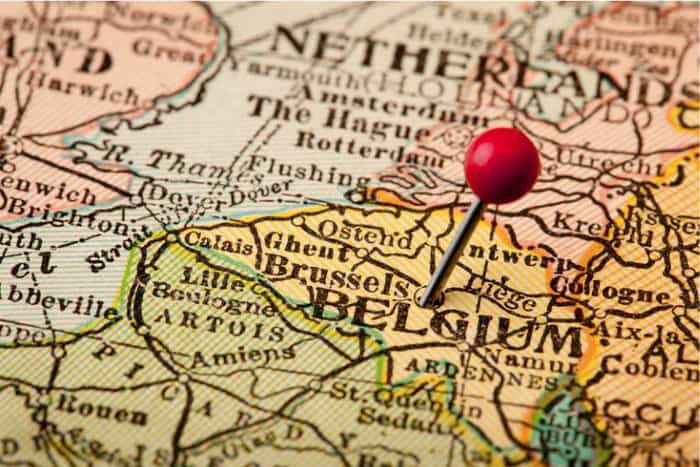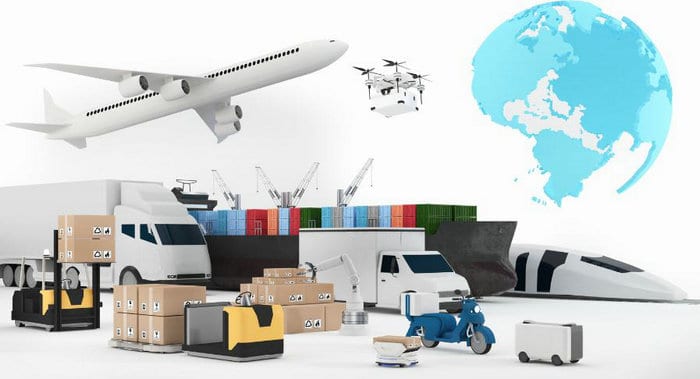
Shipping from China to Belgium has become an essential component of global trade, catering to the demands of businesses expanding into international markets. As you navigate the complexities of international shipping, understanding the shipping routes, costs, and regulations is vital. With China being a manufacturing powerhouse, a significant volume of goods flows to Belgium, making it a crucial destination for importers.
When you ship from China to Belgium, you engage with several stakeholders, including freight forwarders, shipping lines, and customs officials. The choice of shipping method – air or sea freight – influences the transit time and cost. Sea freight is typically more economical for large shipments, despite a longer transit time, while air freight offers swifter delivery for urgent or high-value goods.
Navigating the customs procedures in Belgium is a key step in ensuring the smooth transit of your goods. Familiarizing yourself with the required documentation and import duties will help avoid delays and ensure compliance. This process involves accurate classification of goods, understanding the Harmonized System codes, and preparing for any inspections that might be necessary upon arrival in Belgium.
Overview of Shipping Processes
Shipping goods from China to Belgium involves a series of steps. Depending on the type of cargo and urgency, you may choose between air freight and sea freight as your main modes of transportation. Each option comes with its respective transit times, costs, and logistics.
Choosing the Shipping Method
- Air Freight: Best for time-sensitive shipments. While more expensive, it’s significantly faster than sea freight.
- Sea Freight: Ideal for larger, less time-sensitive shipments. More cost-effective, especially for heavy or bulky goods.
Preparing Your Cargo
Before you ship, ensure your cargo is properly packaged, labeled, and accompanied by all necessary documentation, such as commercial invoices, packing lists, and Bills of Lading (B/L) or Air Waybills (AWB) for sea and air freight respectively.
Customs Clearance
Your shipment must go through customs both in China and Belgium. Familiarize yourself with the required procedures and regulations to avoid delays. It’s recommended to engage with a freight forwarder or customs broker who can assist with these processes.
Transit and Handling
Upon departure from China, you will receive an estimated date of arrival (EDA) in Belgium. During transit, carriers typically provide tracking information. Once in Belgium, the cargo must be received, cleared, and then transported to the final destination, which may involve additional inland transportation.
Types of Shipping Services

When shipping from China to Belgium, you have multiple service options tailored to your needs regarding speed, cost, and volume. Your choice will depend on the urgency, budget, retail strategy, and nature of the goods you’re transporting.
Express Shipping
Express courier services offer the fastest shipping method for your packages. This option suits small, high-value items or urgent shipments.
Air Freight
Air cargo transportation is a quicker option than sea and rail but more costly. It’s practical for shipments that are too large for courier services but too time-sensitive for sea or rail.
Major airports that handle shipments from China to Belgium:
| Airports in China | Airports in Belgium |
| Shanghai Pudong International Airport (PVG) | Brussels Airport (BRU) |
| Beijing Capital International Airport (PEK) | Liège Airport (LGG) |
| Guangzhou Baiyun International Airport (CAN) | Ostend-Bruges International Airport (OST) |
| Shenzhen Bao’an International Airport (SZX) |
Sea Freight
Sea freight from China to Belgium is the most popular shipping solution due to its cost-effectiveness, although it is the slowest way to ship containers from China to Belgium.
Major ports that handle shipments from China to Belgium:
| Ports in China | Ports in Belgium |
| Shanghai Pudong International Airport (PVG) | Port of Shanghai (SHA) |
| Beijing Capital International Airport (PEK) | Port of Shenzhen (SHE) |
| Guangzhou Baiyun International Airport (CAN) | Port of Ningbo-Zhoushan (NGB) |
| Shenzhen Bao’an International Airport (SZX) | Port of Qingdao (TAO) |
Rail Freight
Container shipping by train from China to Belgium is an economical and environmentally friendly option.
| Shipping Methods | Transit Times |
| Express Shipping | 3-5 days |
| Air Freight | 5-10 days |
| Sea Freight | 20-40 days |
| Rail Freight | 18-20 days |
For each service type, consider the balance between speed, cost, and environmental impact to choose the best method for your shipping needs.
Cost Considerations
Understanding the details of shipping costs from China to Belgium will help you budget effectively and avoid unexpected expenses. The three main areas to consider are freight charges, duties and taxes, and insurance costs.
Freight Costs
Freight rates depend significantly on the mode of transportation selected: air freight or sea freight. Sea shipping is generally less expensive and is billed either by container rates for large shipments or by cubic meters for less-than-container loads (LCL). Air shipping is faster but more costly and is priced by weight and volume.
- Sea Freight
- FCL shipping (Full Container Load): Charged per container (e.g., 20′ or 40′).
- LCL shipping (Less than Container Load): Charged per cubic meter.
- Air Freight
- Charged per kilogram, accounting for the greater of actual weight or volumetric weight.
Duties and Taxes
Shipments imported into Belgium are subject to various taxes and duties levied by Belgian Customs.
- Import Duties: These are typically a percentage of the Customs Value and vary depending on the type of goods.
- Value Added Tax (VAT): In Belgium, VAT is charged on the sum of the Customs Value, import duties, and other taxes.
Insurance Expenses
Insurance coverage is essential to protect your shipment against loss or damage. The cost for insurance typically ranges from 0.3% to 0.5% of the Commercial Invoice value. It’s advisable to check what your policy covers, as the terms and costs can vary significantly.
- Basic Coverage: Compensates you for the declared value of your goods up to the limit of the policy.
- Comprehensive Coverage: Offers protection for a wider range of incidents, including damage during loading or unloading, natural disasters, and piracy.
Documentation Required for Shipping
When shipping from China to Belgium, ensure you have the necessary documentation. Proper documentation facilitates customs clearance, preventing delays and potential extra costs.
- Commercial Invoice: This is a critical document issued by the seller to the buyer. It provides information about the transaction, including a description of the goods, total value, and details about the seller and buyer.
- Packing List: Alongside the commercial invoice, you need a packing list. It details your shipment’s contents, such as weight, dimensions, and packaging type, and should match the commercial invoice.
- Bill of Lading (B/L) or Air Waybill (AWB): For sea freight, the carrier provides a Bill of Lading. For air freight, an Air Waybill is used. Either document acts as a receipt for goods and a contract between the carrier and the shipper.
- Certificate of Origin: A Certificate of Origin may be required to certify that the goods have been manufactured in China. It is an essential document for customs clearance in Belgium.
- Import/Export Declarations: You must submit an export declaration in China and an import declaration in Belgium. These are necessary for customs authorities to assess and process your shipment.
- Other Permits/Certificates: You might need additional permits or certificates depending on the nature of your shipped items. For example, agricultural products may require a phytosanitary certificate, and specific technology exports might need a dual-use export license.
Check with both Chinese and Belgian customs authorities for any updates to requirements, as regulations can change. Accurate and complete documentation ensures a smoother shipping process.
Customs Regulations and Compliance
When importing from China to Belgium, you must know the customs regulations to ensure compliance. Belgium, being a part of the European Union, adheres to strict customs rules.
- Belgium’s Customs Tariff, based on the Harmonized System (HS), dictates the duties to be paid. It is imperative that your goods are correctly classified under the HS code to prevent delays or penalties.
- VAT and Duties:
- Value Added Tax (VAT): The standard rate is 21% but can vary for certain goods.
- Duties: Depend on the product type and value.
- Import Restrictions: Certain goods, such as weapons, live animals, and pharmaceuticals, have strict controls or may be prohibited.
- Customs Clearance Process:
- Submission of Entry Summary Declaration (ENS) before arrival.
- Goods declaration and presentation of documents upon entry.
- Payment of due taxes and duties.
Compliance with the EU’s customs regulations is crucial to avoid fines and confiscation.
Electronic Declaration: Belgium customs supports the electronic submission of declarations to expedite the process.
Stay current with Belgian customs regulations as policy changes could impact your shipment requirements.
Packaging and Container Options

When shipping from China to Belgium, you have various packaging and container options to ensure that your goods arrive safely and efficiently. Your choice depends on the type of goods you’re shipping, their volume, and your budget.
Types of Packaging
- Cartons: These are suitable for lightweight items. Bubble wrap or packing peanuts can be used for additional protection.
- Crates: Wooden crates are ideal for heavy or fragile items requiring extra security.
- Drums: For liquids or granules, steel or plastic drums are commonly used.
Container Types
- Standard Containers: With a common size of 20ft or 40ft, they are perfect for dry cargo.
- High-Cube Containers: These provide extra height, which is beneficial for light, bulky cargo.
- Refrigerated Containers: They maintain a constant temperature for shipping perishable goods.
- Open-Top Containers: Useful for cargo that is too tall for standard containers.
Container Loading Options
- Full Container Load (FCL): You pay for a whole container regardless of your cargo size. This gives you control over the container and ensures your goods are not mixed with others.
- Less than Container Load (LCL): Suitable for smaller shipments. Your goods share container space with others, making it a cost-effective option if you do not have enough cargo for a full container.
Selecting the right packaging and container is crucial for protecting your goods and can affect shipping costs.
Transit Times and Tracking
When you ship goods from China to Belgium, understanding the transit times and tracking mechanisms is crucial to managing your expectations and staying updated on your shipment’s progress.
Estimated Transit Times
Transit times vary based on the shipping method you select:
- Air Freight: typically 5-10 days
- Sea Freight: can range from 20 to 40 days depending on the sea route
Remember that these are estimated times and can be affected by weather, port delays, and customs clearance.
Tracking Your Shipment
The following tools can help track your shipment:
- Carrier’s Website or Mobile App: Input your tracking number to receive real-time updates.
- Shipping Aggregator Services: Websites that allow you to track multiple carriers in one place.
- Customs Websites: Use your shipment’s identification to check customs status.
For the most accurate information:
- Ensure you consistently check updates to stay informed.
- Contact the carrier directly if you notice any discrepancies or delays in tracking.
Frequent Tracking Milestones
- Shipment Accepted: The carrier has received and dispatched your cargo.
- In Transit: Your shipment is on the way.
- Arrived at Destination: Arrival at a local facility in Belgium.
- Out for Delivery: Final stage before the shipment reaches you.
Remember, proactive tracking enables timely interventions should any issues arise during transit.
Challenges and Risk Management
When shipping from China to Belgium, you face a range of logistical challenges. Managing these risks is critical for the success of your supply chain.
Delays and Losses
You may encounter delays due to various factors such as customs clearance, weather conditions, and congestion at ports. To mitigate these, stay informed about your shipment’s status and consider insurance to cover any potential losses.
Strategies to Manage Delays and Losses:
- Insurance: Opt for comprehensive coverage for peace of mind.
- Real-Time Tracking: Utilize GPS or RFID technology for up-to-date information.
Damage Prevention
Adequate packaging and careful handling are vital to ensure goods are not damaged while in transit.. You should use sturdy containers and secure packing materials, especially for fragile items.
Packing Guidelines:
- Container: Choose the correct size and type for your goods.
- Materials: Utilize bubble wrap, foam, or other protective materials.
Quality Control
Maintaining the quality of your products throughout the shipping process is paramount. Work closely with your suppliers and logistics providers to ensure quality control standards are met at every stage.
Quality Control Measures:
- Inspections: Conduct pre-shipment inspections.
- Audit Trails: Keep detailed records for accountability.
Tips for Efficient Shipping
When shipping from China to Belgium, choose the right freight option for your needs. Sea freight is more cost-effective for large volumes, while air freight is faster but more expensive. Consider using a shipping agent to identify the most economical route.
Pack your goods properly to prevent damage during transit. Use sturdy packaging materials and ensure that fragile items are well-protected. Proper labeling is crucial—including all necessary information such as contents, destination, and handling instructions.
Here are critical checkpoints:
- Documentation: Ensure you have all the required documentation, such as a bill of lading, commercial invoice, and packing list, to avoid customs delays.
- Customs regulations: Familiarize yourself with the customs regulations of both China and Belgium to ensure a smooth shipping process. Check for any restricted items and understand the tax/duty implications.
- Timing: Plan around holidays and peak seasons to avoid delays. Both Chinese and Belgian holidays can affect shipping times.
- Tracking: Use a service that offers tracking so you can monitor your shipment’s progress and anticipate any issues.
| Checklist Item | Description |
|---|---|
| Freight Option | Sea freight for volume, air freight for speed. |
| Packing | Use quality materials and label them correctly. |
| Documentation | Bill of lading, commercial invoice, packing list. |
| Customs Regulations | Review restrictions and taxes. |
| Timing | Account for holidays and peak seasons. |
| Tracking | Choose a service with robust tracking capabilities. |
By adhering to these tips, your shipping process from China to Belgium can be both time-efficient and cost-effective.
Why Choose Us? Luckystar Logistic
Luckystar, founded in 2022, is a distinguished member of the Federal Maritime Commission (FMC) and operates as a Non-Vessel Operating Common Carrier (NVOCC). The freight forwarding company primarily serves China, the USA, Canada, and Europe, striving to offer top-notch service quality at lower costs. Since its establishment, the shipping company has remained steadfast in its commitment to offering global door-to-door delivery, focusing on reliability, flexibility, and promptness.
We help you calculate the shipping cost and leverage our route knowledge and relationships to optimize logistics, balancing cost, speed, and reliability. We offer the best solution and freight service from China to Belgium.
Please contact us for further assistance if you have any other questions or need more details on the delivery service. We strive to help businesses make informed freight mode selections and fulfill all your shipping requirements from China to Belgium.
